2025 Society Award Winners

I am pleased to report that the 2025 NPSS Society Awards have been decided. This year we have 12 winners who were selected by the NPSS Awards Committee representing all eight technical committees of the Society. I would like to congratulate all of these deserving winners and thank the nominators of all candidates, including those who were unsuccessful on this occasion. The pool of nominees was very strong.
Below you will find the biographies of all 2025 award winners. Please consider nominating a deserving colleague for our 2026 round of awards, which has a deadline of January 31, 2026. All the application forms can be found on the IEEE NPSS web site at https://ieee-npss.org/awards/npss-awards/.
- Merit Award
- Richard F. Shea Distinguished Member Award
- Early Achievement Award
- NPSS Graduate Scholarship Award
- Robert J. Barker Graduate Student Award
- Magne ‘Kris’ Kristiansen Award
- Edward J. Hoffman Early Career Development Grant
- Ronald J. Jaszczak Graduate Award
- Glenn F. Knoll Post Doctoral Educational Grant
- Glenn F. Knoll Graduate Educational Grant
Merit Award
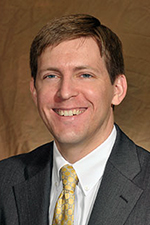
Jason Hayward, UCOR Fellow, is a Professor of Nuclear Engineering at the University of Tennessee. Jason holds appointments with Oak Ridge National Laboratory and the Y12 National Security Complex. He serves as Director of Defense Nuclear Nonproliferation’s Enabling Capabilities in Technology (TECH) Consortium and the Deputy Executive Director for the Nuclear Science and Security Consortium. Jason has 70+ peer-reviewed publications and 25 PhD graduates. He teaches classes in engineering design, radiation detection and imaging, and nondestructive assay of nuclear materials. Jason is an IEEE Senior Member and an Associate Editor for IEEE Transactions on Nuclear Science. He holds a PhD in Nuclear Engineering and Radiological Sciences from the University of Michigan. Prior to his time in academia, Jason served as a U.S. Naval Officer for eight years.
Jason researches radiation instrumentation and measurement methodology, especially for nonproliferation technologies and imaging. His germanium-detector studies improved the understanding of charge sharing between strips and helped to show what position resolution was achievable. Additionally, he led a Cherenkov detector program which developed and characterized novel glasses for gamma ray and neutron sensing. This Cherenkov detector program included the first demonstration and publications on MeV gamma-ray LiDAR, which was shown to be capable of seeing the location of layers of material through other dense layers of material (e.g., iron, lead, uranium).
Jason has conducted research in radioactive source search in maritime and terrestrial environments. His research was the first to document the variability of cosmic-ray-induced fast neutron background at street level in an urban environment (Knoxville, TN). Further, it was the first research to examine the optimization of coded aperture masks appropriate for combined gamma ray, fast neutron, and slow neutron imaging.
Jason has led teams to investigate exploiting time-correlated signatures and directionality of interrogation to detect shielded highly enriched uranium. His research has led to improved understanding and performance of the radiation detectors used in multi-modal associated particle imaging (API) with D-T neutrons. His research has also developed methods capable of rapidly interpreting the properties of uranium objects produced from associated particle imaging.
Jason has led teams to develop neutron instrumentation for neutron science facilities that have very high position resolution and count rate capabilities. These technologies are especially important for advancing the capabilities at world-leading neutron science facilities that are most constrained by position resolution and count rate, i.e., neutron imaging and neutron reflectometry, respectively. Regarding position resolution, Jason’s team developed and demonstrated a lithium-glass-based scintillating fiber detector having 16-micron position resolution. Regarding count rate, Jason’s team developed a pixelated lithium-glass-based detector that was able to handle the full brightness of ORNL’s Spallation Neutron Source without saturation or any need for attenuation, which is orders of magnitude higher than the He-3-based instrumentation that was being used.
Jason has also led and co-led teams responsible for fabrication and characterization of novel organic and inorganic scintillation detectors. His studies have increased understanding of scintillator compositions including iridium-loaded plastic scintillators, pulse-shape-discrimination plastics, cesium hafnium chloride, yttrium aluminum perovskite, and terbium-loaded glass scintillator.
His citation for the 2025 NPSS Merit Award reads: “For contributions to increasing understanding of radiation instrumentation and measurement methodology pertaining to scintillation detectors, Cherenkov detectors, high-purity germanium strips detectors, radioactive source search, associated particle imaging, and gamma-ray LiDAR.”
Richard F. Shea Distinguished Member Award

Alberto Del Guerra obtained the Master Physics at Pisa University in 1968 with a thesis, carried out within the Proton Accelerator Group (GAP). Then as a post-doc he joined the Proton-Electron-Production at threshold (PEP) group, an Italian-English collaboration (1968-1975) on experimental particle physics at the NINA electron-synchrotron at Daresbury (UK). Upon returning to the University of Pisa in 1975 as Assistant Professor he was asked to organize a School of Specialization in Health Physics to train physicists-radiation protectionists needed for the new nuclear reactors to be installed in Italy. This assignment arises new interests towards Health Physics from a professional point of view and towards Medical Physics as research discipline, interests that he would never abandon.
He has held various tenure academic positions: Associate Professor at the University of Pisa (1982-1987), Full Professor at the University of Naples Federico II (1987-1991) then at the University of Ferrara (1991-1998) to return to the University of Pisa in 1998. In each University he established and directed a research group in Medical Physics with numerous collaborators and students. Many of them have carried forward projects started by Prof. Del Guerra and now have tenure positions at universities and research centers in Italy and abroad. He has extended periods of leave in US: at the National Berkeley Laboratory (1980-81 as Fulbright Scholar in the group of Victor Perez-Mendez) and at the Washington University in Seattle (2013) in the group of Tom Lewellen.
His research activity has been mainly directed to the development of ionizing radiation detectors in the medical field, particularly on Positron Emission Tomography (PET) and proton-therapy. His scientific production includes more than 400 articles with more than 5000 citations (H-index of 37). The contribution of Alberto Del Guerra to the field of applied nuclear science to medicine was not limited to the academic teaching and scientific research but also included his endless effort for promotion and dissemination activities. For more than 10 years he was Editor in Chief of the Journal “Physica Medica”, that under his leadership became one of the three major Journals in Medical Physics worldwide. He had officer responsibility for various scientific societies: Chair of the Scientific Committee and subsequently President of the European Federation of Organizations for Medical Physics (EFOMP), member of the Physics Committee of the European Association of Nuclear Medicine (EANM). In 2024 he has received the l’Applied Nuclear Prize of the European Physical Society (EPS).
He has also gained a distinguished scientific/administrative role inside IEEE-Nuclear and Plasma Sciences Society. He was a founding member of the Transnational Committee, elected member of the ADCOM of IEEE-NPSS, Chair of the Joint Oversight Committee, Chair of the Fellow Evaluation Committee and Chair of the NPSS Fellow Search Committee. In 2012, he was elevated to the grade of Fellow of IEEE and is now Life Fellow of IEEE.
Alberto del Guerra, now Retired Professor of Physics at Pisa University, has been selected as the recipient of the “2025 NPSS Richard F.Shea Distinguished Member Award” with the citation: “For outstanding and innovative contributions to the NPSS, particularly for encouraging and increasing international involvement from our community and promoting IEEE Fellows from within the NPSS, and for innovative technical contributions to the field of Medical Physics, particularly for PET and Particle Therapy.”
Early Achievement Award
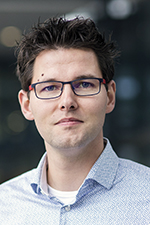
Dr. Tom Huiskamp received his PhD degree (with honors) from Eindhoven University of Technology (TU/e) in 2015, where he currently works as (tenured) associate professor. He developed his own research team on the topic of pulsed power technology for plasma generation to work towards an “electric future”, where chemical (often fossil-fuel-based) processes can be replaced with his fully electrical high-voltage pulsed plasma processes. He currently leads the work in the TU/e high-voltage lab, working in projects on large scale plasma air purification, fertilizer generation with plasmas, pulsed power drilling of geothermal wells, medical disinfection with plasmas and others. In the last years, he has pioneered the work on the solid-state Impedance-Matched Marx generator, a completely semi-conductor-driven, high-repetition rate, nanosecond pulse source. As a visiting researcher he worked at the Kumamoto University in Japan, the University of Southern California in Los Angeles and the Leibniz Institute for Plasma Science and Technology in Germany. In 2024 he won the IEEE International Power Modulator and High-Voltage Conference Kenneth J. Germeshausen Award, the prestigious Dutch VIDI grant and the Hidde-Nijland Prize for excellent energy researchers. Furthermore, he was technical chair for the 2024 Euro-Asian Pulsed Power Conference and is technical chair for the 2025 IEEE Pulsed Power and Plasma Science conference and is a member of the IEEE Pulsed Power Science and Technology committee. He has (co)authored 38 peer-reviewed journal papers, three book chapters, two Guest Editorials, three patents and over 100 conference contributions, including 13 invited and plenary talks.
Dr. Huiskamp won the NPSS Early Achievement Award “For contributions to the development of novel, repetitive, nanosecond pulsed power techniques for the generation of transient plasma.”
NPSS Graduate Scholarship Award
Luke Polson
Luke Polson is a PhD candidate in Medical Physics at the University of British Columbia, specializing in medical image reconstruction. His research focuses on improving image quantification and interpretability through advanced Monte Carlo-based system modeling techniques. Luke is the primary developer of PyTomography, an open-source Python library that supports SPECT, PET, and CT image reconstruction, making cutting-edge tools accessible to the broader research community. Driven by a passion for innovation and collaboration, Luke not only advances his own work but also plays a leadership role in his lab, helping colleagues refine their research and publications. His dedication to both science and mentorship reflects his commitment to pushing the field forward and supporting those around him.
Flynn Darby
Flynn Darby’s research focuses on analyzing fission chain kinetics through radiation noise, notably extending these techniques to gamma-ray analyses. His work has shown the potential of using gamma-ray detection to quantify fission chain temporal behavior in thermal reactor environments, offering a valuable method where neutron detection can be difficult to analyze. This gamma-ray analysis of thermal reactors provides improved modalities for benchmark measurement data and an additional technique for reactor monitoring.
Beyond this fundamental work, Flynn has also actively engaged with the nuclear security community, demonstrating his expertise in practical applications of radiation detection. He led a module on multiplicity counting during a safeguards education course and dedicated two years to instructing the Detection for Nuclear Nonproliferation laboratory at the University of Michigan, where he demonstrated a range of detector applications for enrichment quantification, fission detection, and source search.
Flynn’s interest in both research and teaching is clear, and his future goals include researching within the US national laboratory framework and pursuing opportunities in education. We acknowledge the important support Flynn has received from the NEN-2 group at Los Alamos National Laboratory (LANL), Jesson Hutchinson from EPFL, Dr. Oskari Pakari, and the Detection for Nuclear Nonproliferation Group (DNNG).
Raymond Lau
Raymond Lau graduated from Rice University in 2020 with a B.S.M.E. in Mechanical Engineering before pursuing a M.S. and Ph.D. in Aeronautics & Astronautics at Stanford University. During his M.S., Raymond developed computational particle-in-cell models to simulate low temperature plasma devices — namely, Hall effect thrusters and capacitively coupled plasmas. Raymond took the skills gained from these projects and applied it in the pursuit of his Ph.D. towards hypervelocity impact plasmas: plasmas formed via high speed impacts between a projectile and target material. These plasmas can form in the space environment due to the impact between micrometeoroids or space debris and a spacecraft surface. Raymond’s work has been able to simulate and characterize electromagnetic radiation from these plasmas, which has been observed in experiments in the form of an electromagnetic pulse (EMP), and has developed theory explaining the existence of this EMP. Apart from his Ph.D studies, Raymond has pursued internships in inertial confinement fusion, conducting hydrodynamic simulations at Lawrence Livermore National Laboratory in summer 2024 and Pacific Fusion in summer 2025. Raymond has received various awards in his studies, such as the NSF GRFP and first place in the 2023 International Union of Radio Science General Assembly Scientific Symposium (URSI GASS) student paper/presentation competition.
Recipients of 2025 NPSS Graduate Scholarship Awards

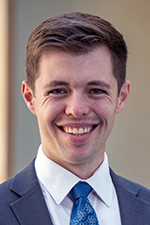
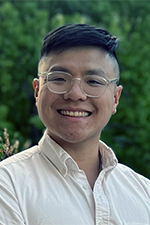
Robert J. Barker Graduate Student Award

Stacie Hernandez is a PhD candidate at the University of New Mexico in the Electrical and Computer Engineering department with an emphasis in Applied Electromagnetics. She received her Bachelor of Science in 2020 and Master of Science in 2022 in electrical engineering from the University of New Mexico. Stacie conducts research at Sandia National Laboratories through an academic alliance that the laboratory has with the University through a 5-year Research Assistantship. Throughout her time at Sandia, Stacie has conducted research from high pressure laser triggered gas switches to innovating the current diagnostics for the Z machine as well as being a Co-Principal investigator for Z experiments. Her plan is to graduate in December of 2025 with her PhD.
Aside from pulsed power applications and technology, Stacie has research experience in high power microwave (HPM) sources working in Dr. Schamiloglu’s Pulsed Power, Beams, and Microwaves Laboratory at UNM as an undergraduate and graduate student. She started by learning how to make copper sulfate resistors to becoming the Chief Safety Officer of the lab. In the summer of 2020 she was an Air Force Research Laboratory Directed Energy Scholar where she learned to use PIC codes to model HPM sources.
In her downtime Stacie volunteers at events hosted by the local SHPE NM (Society of Hispanic Professional Engineers) professional chapter as well as going salsa dancing. Every other weekend you will find her watching a Formula 1 race (no matter the time).
Magne ‘Kris’ Kristiansen Award

Tao Shao was born in Hubei, China in 1977. He received the B.Sc. degree from the Wuhan University of Hydraulic and Electrical Engineering, Wuhan, China, in 2000, the M.Sc. degree in electrical engineering from Wuhan University in 2003, and the Ph.D. degree in electrical engineering from the Graduate University, Chinese Academy of Sciences (CAS), Beijing, China in 2006. He joined the Institute of Electrical Engineering, CAS, after graduation and has been a professor there since Oct. 2013. He was a Visiting Scholar at the University of New Mexico, Albuquerque, NM, USA from 2011 to 2012, and was a Senior Visiting Scholar at the Queensland University of Technology, Brisbane, Queensland, Australia from January to March 2020.
Dr. Shao’s principal research is on the physics of gas discharges driven by pulsed power and on their plasma applications. His work has focused on improving pulsed power technology and on developing improved pulsed power sources, with the aim of generating plasmas with high reactivity, controllable parameters, and low energy consumption. This work has deepened the understanding of the ultra-fast gas breakdown process and the mechanism of discharge development, enabling the generation of large-scale uniform/diffuse atmospheric pressure discharges for practical applications. Based on the new insights he derived into the physical and chemical mechanisms of pulsed discharges, and he has led his team to develop pulsed power-enabled energy conversion technologies to promote the goal of carbon neutrality. In addition, he and his team have developed methods to improve the performance of high-voltage pulsed power systems by using pulsed plasma treatments to enhance the surface properties of their high-voltage insulators, and have pioneered the use of pulsed discharge excimer UV radiation to boost the capacity of polymer film-based energy storage capacitors. This work has bridged the gap between lab-scale science and industrial-scale implementation.
Dr. Shao has been a member of the IEEE since 2010 and is currently an IEEE Senior Member. He is a regular attendee at IEEE international conferences related to pulsed power and discharge plasmas, including the IEEE International Conference on Plasma Science (ICOPS), the IEEE Pulsed Power Conference (PPC), and the IEEE International Power Modulator and High Voltage Conference (IPMHVC). He has published more than 300 papers, including 150+ papers in international refereed journals (50+ IEEE Transactions, etc.). He has been an Associate Editor of the IEEE Trans. Dielectr. Electr. Insul. since 2018. He received the William G. Dunbar Award from the IPMHVC in 2018 and was the recipient of the ISP Most Innovative Pulsed Power Application Award from the International Society on Pulsed Power Applications (ISP) at the 10th Euro-Asian Pulsed Power Conference in 2024. He served as a member of the IEEE NPSS Pulsed Power Science and Technology Committee from 2022 to 2025, and is currently an elected member of the IEEE NPSS Plasma Science and Applications Executive Committee (2025 to 2027). He was the General Chair of the 51st IEEE International Conference on Plasma Science, Beijing, China, June 16-20, 2024, which was the first ICOPS hosted in China.
His citation reads: “For contributions to pulsed power technology for discharge plasma generation, modulation, and application: generating atmospheric air homogeneous/diffuse discharge and building technical basis for applications in energy conversion and materials modification.”
Edward J. Hoffman Early Career Development Grant

Dr. Min Sun Lee is currently a Senior Researcher at Korea Atomic Energy Research Institute (KAERI) in South Korea since 2020. Dr. Lee has devoted herself to the field of medical imaging since 2012, especially focusing on PET (Positron Emission Tomography) instrumentation.
She received her Ph.D. in Radiation Applied Life Sciences from Seoul National University. During her Ph.D., Dr. Lee developed a low-cost depth-of-interaction (DOI) PET system preclinical imaging and proposed a novel algorithm to identify inter-crystal scattering events, enhancing PET resolution (Phys. Med. Biol. 2015, 2017, 2018). She also introduced a voxel-based dose calculation method and a CNN-based dosimetry approach that significantly accelerated personalized internal dose estimation (J. Nucl. Med. 2018, Sci. Rep. 2019). In 2018, she joined Dr. Craig Levin’s group at Stanford University as a postdoctoral fellow, where she led the development of a 100-ps time-of-flight (TOF) high-resolution PET detector for brain imager (Phys. Med. Biol. 2021).
Since joining KAERI, Dr. Lee has expanded her research into radiation monitoring systems for nuclear power plants and environmental surveillance (Nucl. Eng. Tech. 2023, 2025, J. Env. Rad. 2025). In parallel, she began developing novel nanoscintillator materials. She first applied nanopatterning techniques to improve light collection efficiency in scintillation crystals (Biomed. Eng. Lett. 2025), and is now extending this approach to explore nanostructure-enhanced scintillators for ultra-sensitive radiation detection.
In recognition of her contributions, she received the 2019 IEEE NPSS Ronald J. Jaszczak Award and the 2025 IEEE NPSS Edward J. Hoffman Early Career Development Grant.
Ronald J. Jaszczak Graduate Award
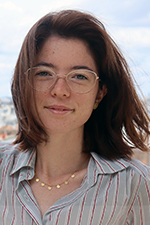
Fiammetta Pagano is a postdoctoral researcher at the Spanish National Research Council (CSIC) in the Institute for Instrumentation in Molecular Imaging (i3M), and within the Detector for Molecular Imaging Lab, led by Dr. Antonio J. Gonzalez. She holds a Ph.D. in Physics (2024) from the University of Milan-Bicocca (Italy), where she also completed her Bachelor’s (2018) and Master’s (2020) degrees in Physics. Her doctoral research, carried out at CERN (Geneva, Switzerland) under the supervision of Dr. Etiennette Auffray, focused on pioneering detector technologies for medical imaging.
Fiammetta’s research refers to the development of advanced molecular imaging technology and in particularly positron emission tomography (PET) detectors, including state-of-the-art time-of-flight (TOF) capabilities. During her Ph.D., she explored the innovative “metascintillator” concept, which combines materials with complementary properties to enhance TOF performance. This work provided her with deep expertise in scintillators, photodetectors, and electronics. Currently, she is advancing her research towards system-level integration, contributing to the development of a dedicated brain PET-TOF scanner in collaboration with the Weill Cornell Medicine (New York), in the scope of an NIH R01 grant.
She is a very productive researcher, with 14 papers published since 2022, including 6 as main author. Her contributions have been recognized with awards such as the Robert’s Prize for the Best Paper Published in Physics in Medicine & Biology (2022) and Best Poster Presentation at the SCINT conference. She also contributes to the scientific community by reviewing for high-impact journals and supervising degree students, reflecting her active involvement in research and education.
Glenn F. Knoll Post Doctoral Educational Grant

Andrea Gonzalez-Montoro, PhD in Physics, was born in Valencia (Spain) in 1992. During her 10-year academic career, she has been working on the study and improvement of Positron Emission Tomography (PET) instrumentation. She has contributed to various well recognized items in the imaging research area, but especially in PET detector development and their assembling into fully operating systems.
From 2014 to February 2019, she carried out her master and PhD studies at the Institute for Instrumentation in Molecular Imaging (i3M) in Valencia, where she was involved in building dedicated PET scanners. She got her PhD diploma in December 2018 with Cum Laude and international distinction.
In March 2019, she joined the Molecular Imaging Program at Stanford University as a Postdoctoral Research Fellow where her research focused on the study of TOF-PET detector blocks. In January 2023 she got a Ramón y Cajal postdoctoral position at the Spanish Research council (CSIC) and came back to i3M, where she is involved in the development of trimodal PET inserts and on the design of a detector block for total-body PET scanners. More recently, she got an ERC starting grant for the development of PHOENIX, the first pediatric PET scanner based on BGO scintillators.
Also, she is deeply involved with educational activities, she joined (as organizer and lecturer) the IEEE NPSS EduCom and the WIE community in 2024. She belongs to the NMISC council and, is co-founder and president of the association Women of Science together with the Foundation Spanish Royal Academy of Science.
Glenn F. Knoll Graduate Educational Grant

David Breitenmoser is a nuclear physicist affiliated with the Paul Scherrer Institute (PSI) and ETH Zurich, where he recently completed his PhD in physics. He holds a Bachelor’s degree in mechanical engineering and a Master’s degree in nuclear engineering, both from ETH Zurich.
His doctoral research focused on advancing airborne gamma-ray spectrometry (AGRS) systems for radiological emergency response. By integrating high-fidelity Monte Carlo simulations, machine learning-based surrogate models, and Bayesian inference, he developed a novel full- spectrum modeling framework for AGRS that substantially extends the capability of these systems to identify and quantify a broader range of radionuclides with improved accuracy and sensitivity. These advancements play a critical role in supporting better-informed protective actions and reducing health risks for the public during radiological emergencies.
In addition to AGRS, David investigated novel approaches to probing non-proportional scintillation physics in inorganic scintillators and developed advanced spectral inversion pipelines with applications in nuclear safeguards, environmental monitoring, and homeland security. His research has been published in several leading journals and recognized with multiple distinctions, including the prestigious PSI Medal.
David will continue his work as a postdoctoral fellow at the University of Michigan in the Detection for Nuclear Nonproliferation Group (DNNG), where he will further develop and apply the modeling techniques established during his PhD to next-generation nuclear instrumentation for national and global security applications.
Steve Meikle, IEEE NPSS Awards Chair, can be reached by e-mail at [email protected]